Reuse of Buffing Dust-Laden Tanning Waste Hybridized with Poly- Styrene for Fabrication of Thermal Insulation Materials
Abstract
1. Introduction
2. Materials and Methods
2.1. Materials
2.2. Methods
2.3. Characterization
3. Results and Discussion
3.1. Physico-Chemical and Mechanical Properties
3.2. Thermogravimetric Analysis (TGA)
3.3. FT-IR Analysis
3.4. SEM Analysis
3.5. EDX Analysis
4. Implications of This Work on Circular Economy
5. Conclusions
Author Contributions
Funding
Institutional Review Board Statement
Informed Consent Statement
Data Availability Statement
Conflicts of Interest
References
- Islam, A.; Molla, Y.; Dey, T.K.; Jamal, M.; Rathanasamy, R.; Uddin, M.E. Latex reinforced waste buffing dust-jeans cotton composites and its characterization. J. Polym. Res. 2021, 28, 322. [Google Scholar] [CrossRef]
- Sekaran, G.; Shanmugasundaram, K.A.; Mariappan, M. Characterization and utilisation of bu_ng dust generated by the leather industry. J. Hazard. Mater. 1998, 63, 53–68. [Google Scholar] [CrossRef]
- Kumar, H.; Prasad, R.; Srivastava, A.; Vashista, M.; Khan, M.Z. Utilization of industrial waste (fly ash) in synthesis of copper based surface composite through friction stir processing route for wear applications. J. Clean. Prod. 2018, 196, 460–468. [Google Scholar] [CrossRef]
- Jiang, Y.; Deng, T.; Yang, K.; Wang, H. Removal performance of phosphate from aqueous solution using a high-capacity sewage sludge-based adsorbent. J. Taiwan Inst. Chem. Eng. 2017, 76, 59–64. [Google Scholar] [CrossRef]
- Sundar, V.J.; Raghavarao, J.; Muralidharan, C.; Mandal, A. Recovery and utilization of chromium-tanned proteinous waste of leather making: A review. Crit. Rev. Environ. Sci. Technol. 2011, 41, 2048–2075. [Google Scholar] [CrossRef]
- Khalili, N.R.; Campbell, M.; Sandi, G.; Golas, J. Production of micro- and mesoporous activated carbon from paper mill sludge. Carbon 2000, 38, 1905–1915. [Google Scholar] [CrossRef]
- Kilic, E.; Tarrés, Q.; Aguilar, M.D.; Espinach, X.; Palmer, P.F.; Puig, R. Leather waste to enhance mechanical performance of high-density polyethylene. Polymers 2020, 12, 2016. [Google Scholar] [CrossRef]
- Lakrafli, H.; Tahiri, S.; Albizane, A.; El Otmani, M.E. Effect of wet blue chrome shaving and buffing dust of leather industry on the thermal conductivity of cement and plaster based materials. Constr. Build. Mater. 2012, 30, 590–596. [Google Scholar] [CrossRef]
- Haas, W.; Krausmann, F.; Wiedenhofer, D.; Heinz, M. How circular is the global economy?: An assessment of material flows, waste production, and recycling in the European Union and theWorld in 2005. J. Ind. Ecol. 2015, 19, 765–777. [Google Scholar] [CrossRef]
- Rouse, J.G.; Vandyke, M.E. A review of keratin-based biomaterials for biomedicalapplications. Materials 2010, 3, 999–1014. [Google Scholar] [CrossRef]
- Geethakarthi, A.; Phanikumar, B.R. Characterization of tannery sludge activated carbon and its utilization in the removal of azo reactive dye. Environ. Sci. Pollut. Res. 2011, 19, 656–665. [Google Scholar] [CrossRef] [PubMed]
- Teklay, A.; Gebeyehu, G.; Getachew, T.; Yaynshet, T.; Sastry, T.P. Preparation of value added composite boards using finished leather waste and plant fibers—A waste utilization effort in Ethiopia. Clean Technol. Environ. Policy 2017, 19, 1285–1296. [Google Scholar] [CrossRef]
- Abu-Jdayil, B.; Hittini, W.; Mourad, A. Development of date pit-polystyrene thermoplastic heat insulator material: Physical and thermal properties. Int. J. Polym. Sci. 2019, 2019, 1697627. [Google Scholar] [CrossRef]
- Brown, E.M.; Taylor, M.M.; Marmer, W.N. Production and potential uses of co products from solid tannery waste. J. Am. Leather Chem. Assoc. 1996, 91, 270–276. [Google Scholar]
- Li, Y.; Guo, R.; Lu, W.; Zhu, D. Research progress on resource utilization of leather solid waste. J. Leather Sci. Eng. 2019, 1, 6. [Google Scholar] [CrossRef]
- Karak, T.; Bhagat, R.M.; Bhattacharyya, P. Municipal solid waste generation, composition, and management: The world scenario. Crit. Rev. Environ. Sci. Technol. 2012, 42, 1509–1630. [Google Scholar] [CrossRef]
- Sharma, S.; Sudhakara, P.; Petru, M.; Singh, J.; Rajkumar, S. Effect of nanoadditives on the novel leather fiber/recycled poly(ethylene-vinyl-acetate) polymer composites for multifunctional applications: Fabrication, characterizations, and multiobjective optimization using central composite design. Nanotechnol. Rev. 2022, 11, 2366–2432. [Google Scholar] [CrossRef]
- Pan, D.; Su, F.; Liu, C.; Guo, Z. Research progress for plastic wastemanagement and manufacture of value-added products. Adv. Compos Hybrid Mater. 2020, 3, 443–461. [Google Scholar] [CrossRef]
- Yılmaz, O.; Kantarli, I.C.; Yuksel, M.; Saglam, M.; Yanik, J. Conversion of leather wastes to useful products. Resour. Conserv. Recycl. 2007, 49, 436–448. [Google Scholar] [CrossRef]
- Barbirato, G.H.A.; Junior, W.E.L.; Hellmeister, V.; Pavesi, M.; Fiorelli, J. OSB panels with balsa wood waste and Castor oil polyurethane resin. Waste Biomass Valorization 2018, 11, 743–751. [Google Scholar] [CrossRef]
- Fiorelli, J.; Galo, R.G.; Junior, S.L.C.; Belini, U.L.; Lasso, P.R.O.; Savastano, H. Multilayer particle board produced with agro industrial waste and Amazonia vegetable fibers. Waste Biomass Valorization 2018, 9, 1151–1161. [Google Scholar] [CrossRef]
- Swarnalatha, S.; Srinivasulu, T.; Srimurali, M.; Sekaran, G. Safe disposal of toxic chrome buffing dust generated from leather industries. J. Hazard. Mater. 2008, 150, 290–299. [Google Scholar] [CrossRef] [PubMed]
- Perez-Ameneiro, M.; Vecino, X.; Cruz, J.M.; Moldes, A.B. Wastewater treatment enhancement by applying a lipopeptide biosurfactant to a lignocellulosic biocomposite. Carbohydr. Polym. 2015, 131, 186–196. [Google Scholar] [CrossRef]
- Lazau, R.I.; Pacurariu, C.; Becherescu, D.; Iano, S.R. Ceramic pigments with chromium content from leather wastes. J. Eur. Ceram. Soc. 2007, 27, 1899–1903. [Google Scholar] [CrossRef]
- Chronska, O.K.; Przepi, A. A mixture of buffing dust and chrome shavings as a filler for nitrile rubbers. J. Appl. Polym. Sci. 2011, 122, 2899–2906. [Google Scholar] [CrossRef]
- Juel, M.A.I.; Mizan, A.; Ahmed, T. Sustainable use of tannery sludge in brick manufacturing in Bangladesh. Waste Manag. 2017, 60, 259–269. [Google Scholar] [CrossRef]
- Liu, J.; Li, Y.C.; Du, Y.; Zheng, L.W.; Chen, Y.F. Performances of ceramisite made bytannery sludge. China Leather 2011, 40, 1–5. [Google Scholar]
- Garcia, N.G.; Reis, E.A.P.; Budemberg, E.R.; Agostini, D.L.S.; Salmazo, L.O.; Cabrera, F.C.; Job, A.E. Natural rubber/leather waste composite foam: A new ecofriendly material and recycling approach. J. Appl. Polym. Sci. 2015, 132, 1–10. [Google Scholar] [CrossRef]
- El-Sabbagh, S.H.; Mohamed, O.A. Recycling of chrome-tanned leather waste in acrylonitrile butadiene rubber. J. Appl. Polym. Sci. 2011, 121, 979–988. [Google Scholar] [CrossRef]
- Ferreira, M.J.; Freitas, F.; Almeida, M.F. The effect of leather fibers on the properties of rubber-leather composites. J. Compos. Mater. 2010, 44, 2801–2817. [Google Scholar] [CrossRef]
- Zupancic, G.D.; Jemec, A. Anaerobic digestion of tannery waste: Semi continuous and anaerobic sequencing batch reactor processes. Biores. Technol. 2010, 101, 26–33. [Google Scholar] [CrossRef] [PubMed]
- Wang, D. Understanding the impact of cationic polyacrylamide on anaerobic digestion of waste activated sludge. Water Res. 2018, 130, 281–290. [Google Scholar] [CrossRef] [PubMed]
- Lakrafli, H.; Tahiri, S.; Albizane, A.; Bouhria, M.; El Otmani, M.E. Experimental study of thermal conductivity of leather and carpentry wastes. Constr. Build. Mater. 2013, 48, 566–574. [Google Scholar] [CrossRef]
- Demir, I. An investigation on the production of construction brick with processed waste tea. Build. Environ. 2006, 41, 1274–1278. [Google Scholar] [CrossRef]
- Farjami, E.; Mohamedali, A. Evaluating interior surfaces including finishing materials, ceiling and their contribution to solar energy in residential buildingsin Famagusta, NorthCypris, Turkey. Renew. Sustain. Energy Rev. 2017, 75, 338–353. [Google Scholar] [CrossRef]
- Diascorn, N.; Calas, S.; Sallée, H.; Achard, P.; Rigacci, A. Polyurethane aerogels synthesis for thermal insulation—Textural, thermal and mechanical properties. J. Supercrit. Fluids 2015, 106, 76–84. [Google Scholar] [CrossRef]
- Li, C.; Chen, Z.; Dong, W.; Lin, L.; Zhu, X.; Liu, Q.; Zhang, H. A review of silicon-based aerogel thermal insulation materials: Performance optimization through composition and microstructure. J. Non-Cryst. Solids. 2020, 56, 120517. [Google Scholar] [CrossRef]
- Kurniawan, T.A.; Liang, X.; Singh, D.; Othman, M.H.D.; Goh, H.H.; Gikas, P.; Kern, A.O.; Kusworo, T.D.; Shoqeir, J.A. Harnessing landfill gas (LFG) for electricity: A strategy to mitigate greenhouse gas (GHG) emissions in Jakarta (Indonesia). J. Environ. Manage. 2022, 301, 113882. [Google Scholar] [CrossRef]
- Lo, H.M.; Liu, M.; Pai, T.; Liu, W.; Wang, S.; Banks, C.; Hung, C.; Chinag, C.; Lin, K.; Chiu, H.; et al. Biostabilization assessment of MSW co-disposed with MSWI fly ash in anaerobic bioreactors. J. Hazard. Mater. 2009, 162, 1233–1242. [Google Scholar] [CrossRef]
- Dirisu, J.O.; Fayomi, O.S.I.; Oyedepo, S.O. Thermal emission and heat transfer characterictis of ceiling materials: A necessity. Energy Proc. 2019, 157, 331–342. [Google Scholar] [CrossRef]
- Irshad, A.; Sharma, B.D. Slaughter house by-product utilization for sustainable meat industry: A review. J. Animal Prod. Adv. 2015, 5, 681–696. [Google Scholar]
- Dwivedi, S.P.; Dixit, A.; Bajaj, R. Development of bio-composite material by utilizing chrome containing leather waste with Al2O3 ceramic particles. Mater. Res. Express 2019, 6, 105105. [Google Scholar] [CrossRef]
- Saikia, P.; Goswami, T.; Dutta, D.; Dutta, N.K.; Sengupta, P.; Neog, D. Development of a flexible composite from leather industry waste and evaluation of their physico-chemical properties. Clean Technol. Environ. Policy 2017, 19, 2171–2178. [Google Scholar] [CrossRef]
- Alam, M.; Rahman, S.; Halder, P.K.; Raquib, A.; Hasan, M. Lee’s and Charlton’s method for investigation of thermal conductivity of insulating materials. J. Mech. Civ. Eng. 2012, 3, 53–60. [Google Scholar] [CrossRef]
- Fathy, M.; Moghny, T.A.; Awadallah, A.E.; El-Bellihi, A.A. Incorporation of multi-walled carbon nanotubes in microspheres used as anion exchange resin via suspension polymerization. Appl. Nanosci. 2014, 4, 543–549. [Google Scholar] [CrossRef]
- Rizvi, G.M.; Park, C.B.; Guo, G. Strategies for processing wood plastic composites with chemical blowing agents. J. Cell Plast. 2008, 44, 125–137. [Google Scholar] [CrossRef]
- Hittini, W.; Mourad, A.H.I.; Abu-Jdayil, B. Cleaner production of thermal insulation boards utilizing buffing dust waste. J. Cleaner Prod. 2019, 236, 117603. [Google Scholar] [CrossRef]
- Basak, G.C.; Goswami, L.; Chattopadhyay, B.; Badyopandhy, A. Plasticizing polystyrene with waste leather buffing dust: A drive towards waste-polymer composite synthesis. Polym. Polym. Compos. 2012, 20, 279–288. [Google Scholar] [CrossRef]
- Kurniawan, T.A.; Lo, W.H.; Sillanpää, M. Treatment of contaminated water laden with 4-chlorophenol using coconut shell waste-based activated carbon modified with chemical agents. Separ. Sci. Technol. 2011, 46, 460–472. [Google Scholar] [CrossRef]
- Premakumara, D.G.J.; Canete, A.L.M.L.; Nagaishi, M.; Kurniawan, T.A. Policy implementation of the Republic Act (RA) No. 9003 in the Philippines on MSW management: A case study of Cebu City. Waste Manag. 2014, 34, 971–979. [Google Scholar] [CrossRef]
- Kurniawan, T.A.; Liang, X.; O’Callaghan, E.; Goh, H.H.; Othman, M.H.D.; Avtar, R.; Kusworo, T.D. Transformation of solid waste management in China: Moving towards sustainability through digitalization-based circular economy. Sustainability 2022, 14, 2374. [Google Scholar] [CrossRef]
- Kurniawan, T.A.; Othman, M.H.D.; Liang, X.; Ayub, M.; Goh, H.H.; Kusworo, T.D.K.; Mohyuddin, A.; Chew, K.W. Microbial fuel cells (MFC): A potential game changer in renewable energy development. Sustainability 2022, 14, 16847. [Google Scholar] [CrossRef]
- Fu, D.; Kurniawan, T.A.; Avtar, R.; Xu, P.; Othman, M.H.D. Recovering heavy metals from electroplating wastewater and their conversion into Zn2Cr-layered double hydroxide (LDH) for pyrophosphate removal from industrial wastewater. Chemosphere 2021, 271, 129861. [Google Scholar] [CrossRef] [PubMed]
- Kurniawan, T.A.; Avtar, R.; Singh, D.; Xue, W.; Dzarfan Othman, M.H.; Hwang, G.H.; Iswanto, I.; Albadarin, A.B.; Kern, A.O. Reforming MSWM in Sukunan (Yogjakarta, Indonesia): A case-study of applying a zero-waste approach based on circular economy paradigm. J. Clean. Prod. 2021, 284, 124775. [Google Scholar] [CrossRef]
- Kurniawan, T.A.; Singh, D.; Avtar, R.; Othman, M.H.D.; Hwang, G.H.; Albadarin, A.B.; Rezakazemi, M.; Setiadi, T.; Shirazian, S. Resource recovery from landfill leachate: An experimental investigation and perspectives. Chemosphere 2021, 274, 129986. [Google Scholar] [CrossRef] [PubMed]
- Kurniawan, T.A.; Singh, D.; Xue, W.; Avtar, R.; Othman, M.H.D.; Hwang, G.H.; Setiadi, T.; Albadarin, A.B.; Shirazian, S. Resource recovery toward sustainability through nutrient removal from landfill leachate. J. Environ. Manag. 2021, 287, 112265. [Google Scholar] [CrossRef]
- Kurniawan, T.A.; Othman, M.H.D.; Hwang, G.H.; Gikas, P. Unlocking digital technology in waste recycling industry in Industry 4.0 era: A transformation towards digitalization-based circular economy in Indonesia. J. Clean. Prod. 2022, 357, 131911. [Google Scholar] [CrossRef]
- Kurniawan, T.A.; Othman, M.H.D.; Singh, D.; Avtar, R.; Goh, H.H.; Setiadi, T.; Lo, W.H. Technological solutions for long-term management of partially used nuclear fuel: A critical review. Ann. Nucl. Energy 2022, 166, 108736. [Google Scholar] [CrossRef]
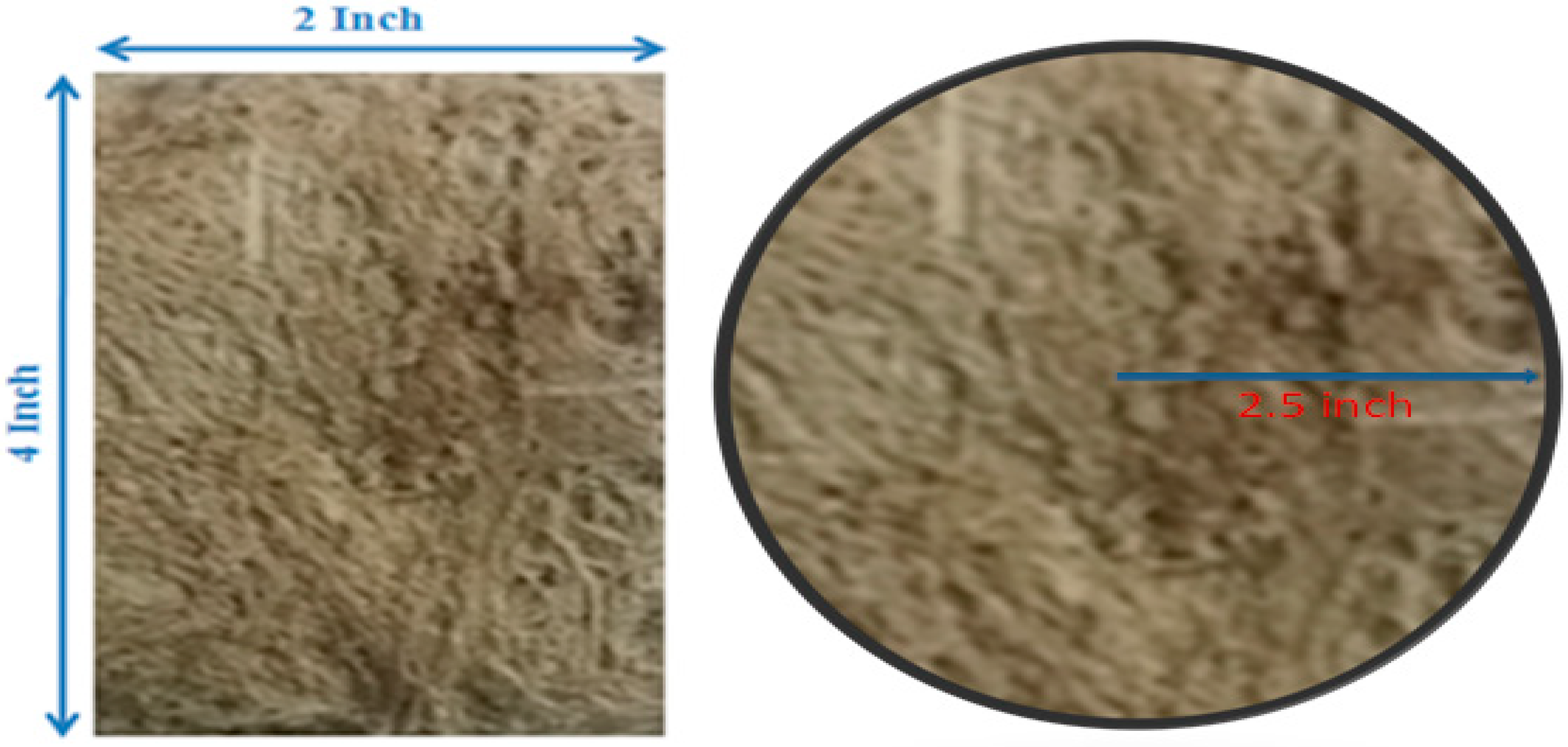
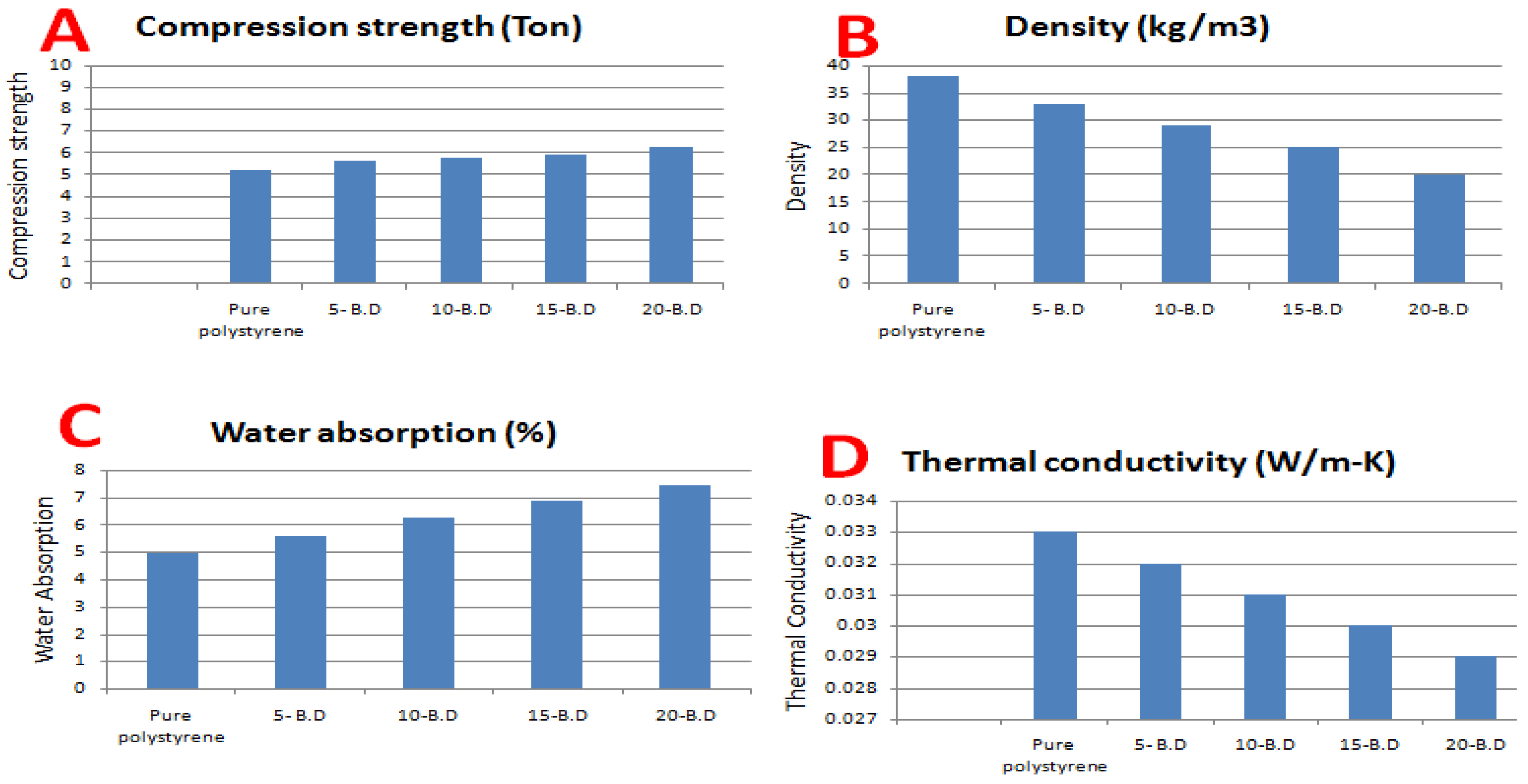
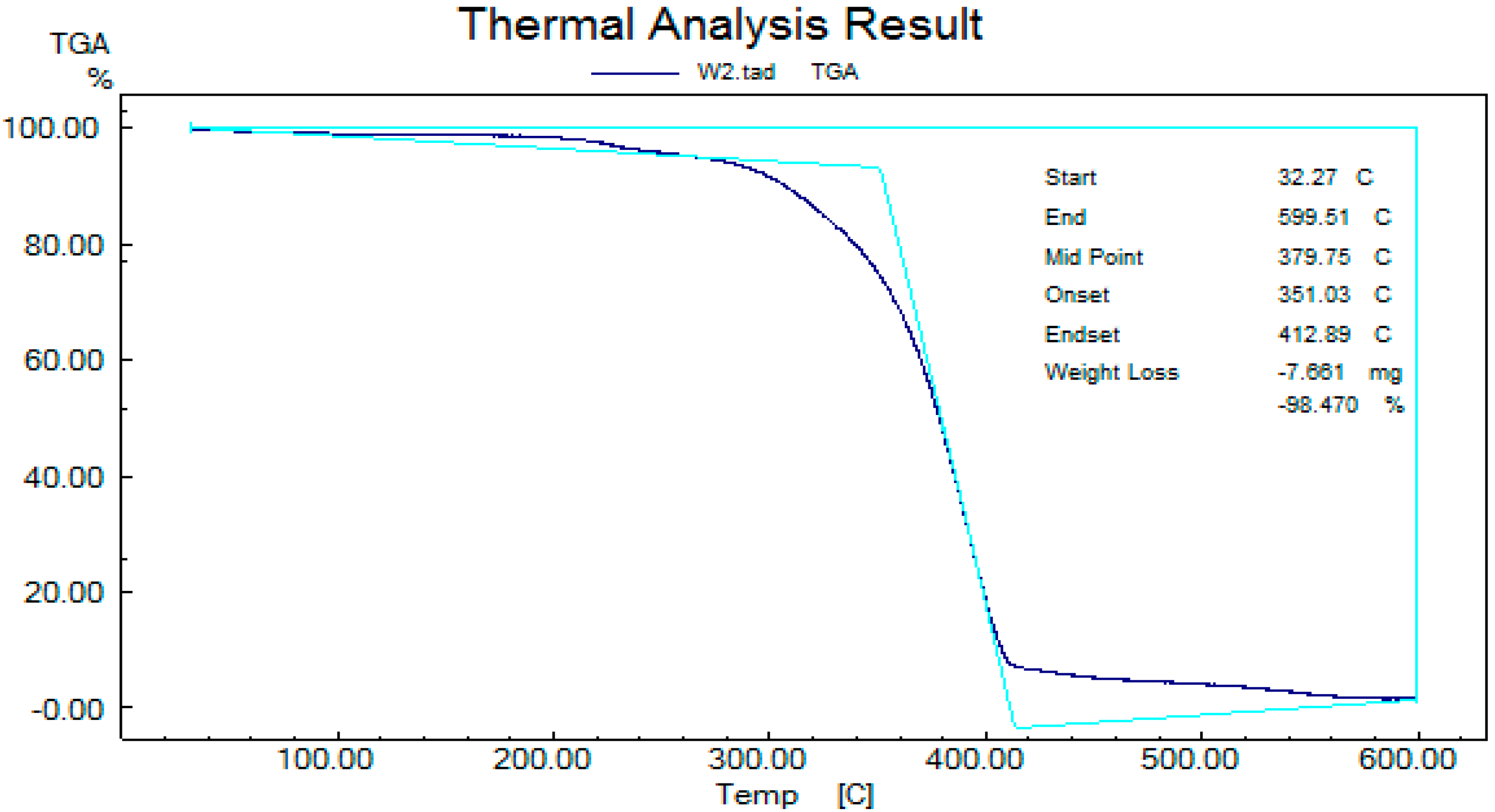


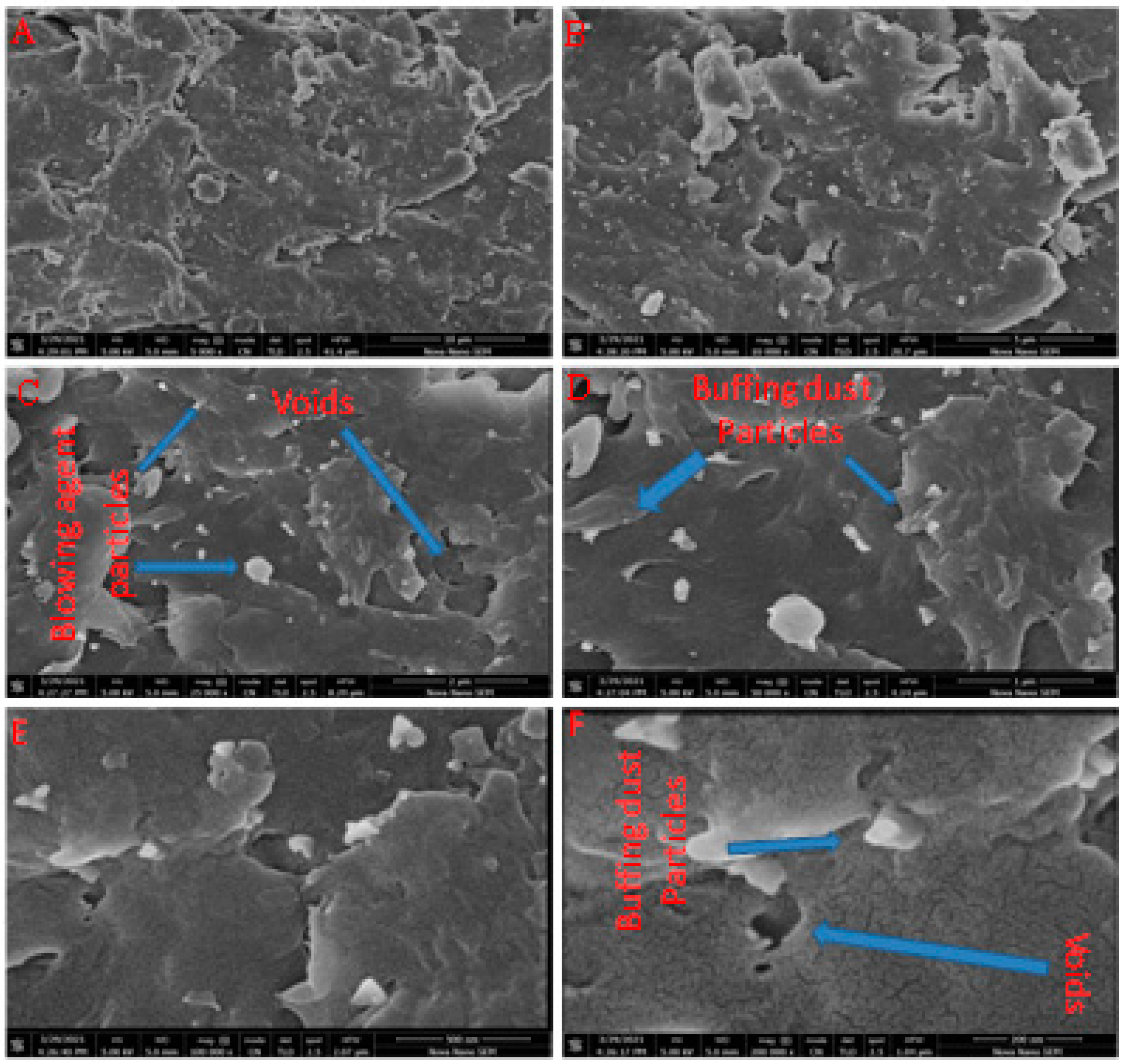
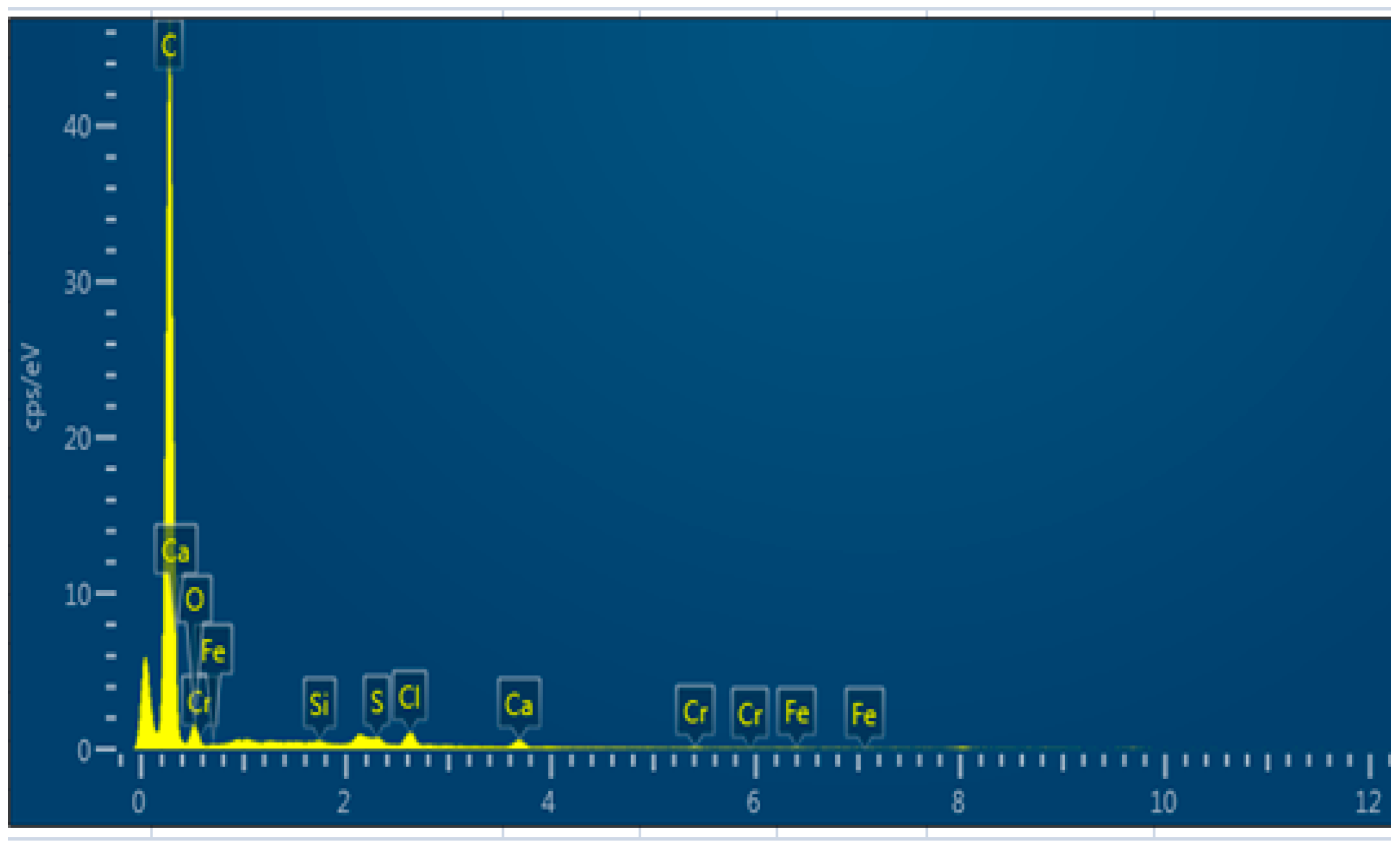
| Sample | Compression Strength (ton) | Density (kg/m3) | Water Absorption (%) | Thermal Conductivity (W/m-K) |
|---|---|---|---|---|
| Pure polystyrene | 5.21 | 38 | 5 | 0.033 |
| 5-BD | 5.61 | 33 | 5.6 | 0.032 |
| 10-BD | 5.80 | 29 | 6.3 | 0.031 |
| 15-BD | 5.95 | 25 | 6.9 | 0.030 |
| 20-BD | 6.25 | 20 | 7.5 | 0.029 |
Disclaimer/Publisher’s Note: The statements, opinions and data contained in all publications are solely those of the individual author(s) and contributor(s) and not of MDPI and/or the editor(s). MDPI and/or the editor(s) disclaim responsibility for any injury to people or property resulting from any ideas, methods, instructions or products referred to in the content. |
© 2023 by the authors. Licensee MDPI, Basel, Switzerland. This article is an open access article distributed under the terms and conditions of the Creative Commons Attribution (CC BY) license (https://creativecommons.org/licenses/by/4.0/).
Share and Cite
Ulfat, W.; Mohyuddin, A.; Amjad, M.; Kurniawan, T.A.; Mujahid, B.; Nadeem, S.; Javed, M.; Amjad, A.; Ashraf, A.Q.; Othman, M.H.D.; et al. Reuse of Buffing Dust-Laden Tanning Waste Hybridized with Poly- Styrene for Fabrication of Thermal Insulation Materials. Sustainability 2023, 15, 1958. https://doi.org/10.3390/su15031958
Ulfat W, Mohyuddin A, Amjad M, Kurniawan TA, Mujahid B, Nadeem S, Javed M, Amjad A, Ashraf AQ, Othman MHD, et al. Reuse of Buffing Dust-Laden Tanning Waste Hybridized with Poly- Styrene for Fabrication of Thermal Insulation Materials. Sustainability. 2023; 15(3):1958. https://doi.org/10.3390/su15031958
Chicago/Turabian StyleUlfat, Wajad, Ayesha Mohyuddin, Muhammad Amjad, Tonni Agustiono Kurniawan, Beenish Mujahid, Sohail Nadeem, Mohsin Javed, Adnan Amjad, Abdul Qayyum Ashraf, Mohd Hafiz Dzarfan Othman, and et al. 2023. "Reuse of Buffing Dust-Laden Tanning Waste Hybridized with Poly- Styrene for Fabrication of Thermal Insulation Materials" Sustainability 15, no. 3: 1958. https://doi.org/10.3390/su15031958
APA StyleUlfat, W., Mohyuddin, A., Amjad, M., Kurniawan, T. A., Mujahid, B., Nadeem, S., Javed, M., Amjad, A., Ashraf, A. Q., Othman, M. H. D., Hassan, S., & Arif, M. (2023). Reuse of Buffing Dust-Laden Tanning Waste Hybridized with Poly- Styrene for Fabrication of Thermal Insulation Materials. Sustainability, 15(3), 1958. https://doi.org/10.3390/su15031958








